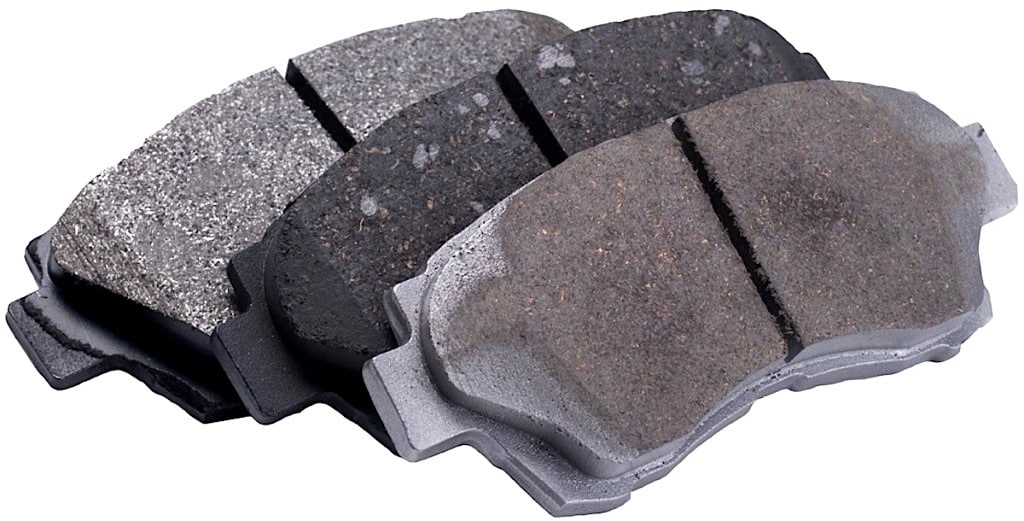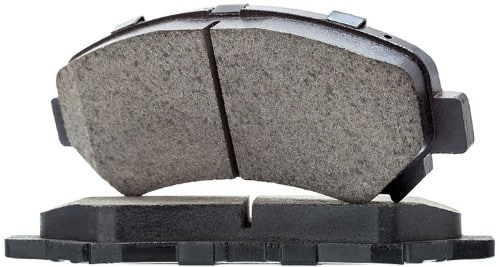It’s no surprise that your car’s braking system is just as vital as any other component. After all, what good is all that power if you can’t control it?
But just as all car parts wear and tear with time, your brake pads too will eventually need replacing. And when the time comes, you’ll be faced with the all-too-common question — “Which brake pads do I choose?”
In this guide, we’ll take a look at the different types of brake pads for your car and help you choose the right compound.
Brake Pads: How Do They Work?
The way your car’s brake system works is simple. You apply the brakes by pushing the brake pedal down. This pushes hydraulic brake fluid through the brake lines of your car, which results in the pads clamping the moving rotor, bringing your car to a halt.
If the brake pads in this system don’t do their job correctly, the entire braking process can suffer. For instance, if your car’s brake pads are already beyond the point at which they should be replaced, they’ll end up causing damage to the brake rotors. Often worn rotors cannot be fixed without replacement.
This doesn’t just mean a bigger bill at your next service, it greatly impacts your car’s braking efficiency, overall smoothness of how it drives, and noise too. The latter is one of the telltale signs of brake pads going bad.
Your 3 Main Options
Automotive brake pads are made from different materials that can be divided into three categories:
- ceramic,
- organic, or
- semi-metallic/metallic.

The composition can vary between brands, but the characteristics of each type remain the same. Depending on the type of friction material used, you’ll notice a difference in pedal feel, dust, noise, longevity, performance, and temperature range.
Non-Asbestos Organic
Budget: $
Pad Life: Low
Best Use: Daily Driving
Noise: Low
Brake Dust: Low-Medium
Among the different types of brake pads available for modern cars, let’s start with the most common compound out there — non-asbestos organic, commonly referred to as “organic brake pads”.
This compound gets its name from the fact that these pads no longer contain asbestos, a material that could dissipate heat easily but was also found to be carcinogenic. Shortly after this, the use of asbestos was no longer permitted.
Organic pads are softer than other compounds on this list and probably won’t last as long as other materials.
On the bright side, these pads are cheap and easy on the rotors. If you manage to wear a set quickly, getting another won’t be heavy on your pocket.

Since the material is soft, you’ll probably spot some extra residue on your wheels. This isn’t a deal-breaker but it’s something that you should keep in mind.
If you’re coming from higher-performance cars, you might notice that the pedal feels a bit spongy. This is because organic pads tend to compress due to the nature of the material. You may have to push the brake pedal harder to make them work as hard as a car with semi-metallic pads.
NAO brake pads are usually the factory choice for a lot of car manufacturers. This means when you replace your aging brake pads with a set of these, you won’t find a big difference.
Organic brake pads are silent (especially in comparison to the metallic brake pads), so these are best suited to a laidback daily driver. They provide adequate stopping power in most everyday driving scenarios.
On the downside, these pads aren’t great in extreme temperatures, which renders them ineffective both in harsh winters and when the driving conditions are more demanding — like on a track day.
Semi-Metallic or Metallic
Budget: $$
Pad Life: Medium
Best Use: Street Use/Light Motorsport
Noise: Medium
Brake Dust: Medium
Metallic brakes are more expensive than NAOs but they’re more popular in the aftermarket, owing to the fact that they last longer and work well in a variety of conditions.
While the exact composition of these brakes may differ depending on the brand, some of the common materials used are:
- iron,
- steel,
- copper, and
- graphite.
Pressing the brake pedal on a car with metallic brake pads won’t give you a spongy feeling. That’s mainly because the pads don’t compress under pressure. This also means an overall positive feeling and more feedback from your car’s brake system.

On the downside, metallic brake pads tend to cause a fair bit of brake dust. They’re also heavier and tend to be harsher on the rotors. So while your pads will last longer, and perform well, your rotors’ overall life might reduce slightly.
Metallic pads might seem like a great intermediate choice, but these have absolute supremacy in a lot of aspects. Not to mention, stopping power remains strong irrespective of the temperature, which is a bonus if you live in colder environments.
These brake pads are noisier than the other options on this list. But in our opinion, it’s a small price to pay for great brakes.
Ceramic
Budget: $$$
Pad Life: Long
Best Use: Motorsport
Noise: Low
Brake Dust: Low
Made from a mix of high-durability ceramic and metallic fibers, this type of brake pad is a popular choice despite the high price that these pads sell for. They serve a very specific purpose and that is high-performance fade-free braking.
Some of the positives include:
- less dust,
- minimal stress on the rotors,
- next to no noise,
- low weight, and
- consistently optimal pedal feel without fade.
Ceramic brake pads work well for track and competitive use. In general, they don’t make a good fit for daily use since they take a long time to heat up.
Despite their higher purchase price, these pads last longer, and they don’t wear the rotors out as aggressively as metallic pads.

The brake feel is okay, but at colder temperatures, these lack brake bite. This can be a negative for when used by enthusiasts in their fun daily driver.
That said, those looking at using ceramic pads will appreciate the lack of noise under braking.
If you’ve got a daily driven supercar, you won’t have to deal with the intrusive noise that metallic pads tend to emit. The lack of dust means you’ll be cleaning your wheels less often.
Where ceramic pads further shine is in the way these provide fade-free braking. So if you’re looking for a replacement brake pad for your track car, ceramic brake pads are a great option.
Which Brake Pad Compound Is Best for You?
Choosing the right compound makes a world of difference to the way your car performs while braking. Now that you’re familiar with each compound and how it works, you’ll be able to make that decision much quicker.
Since the overall composition differs between brands, it’s always a great idea to check out what each brand claims — and more importantly, what other reviews and customers say — before zeroing in on one.
Looking at what the different brake pads types on offer, narrowing down your choice is fairly simple. Mentioned below are the three types of brake pads, each with their pros and cons.
The Quiet, Budget Choice: Organic
Organic brake pads are the least expensive out there. They can make the brakes feel a bit spongy, so if you have a fast car, these won’t be your first choice.
However, if you’re new to modifying your car and want to replace your stock pads with something cheap and don’t indulge in spirited driving, organic brake pads are going to be a good choice.
NAOs don’t last as long and if you’re looking for something to work equally well in a variety of temperatures, you will need to look elsewhere.
The Middle Ground: Semi-Metallic or Metallic
With a wider operating temperature range, semi metallic brake pads are suitable for every possible car and climate. Performance is much better than organic pads and the brake feel is also more confident-inspiring.
Metallic brake pads last longer than the NAOs, but these also wear the rotors out, mainly due to the metallic composition. Daily driving is a strong use case for metallic brake pads, and so are motorsport events.
Ceramic’s Fade-Free Performance
Metallic pads may have the common choice because of the overall solid feel and dependability regardless of temperature, but if you want to push your car lap after lap and still expect excellent performance every time you hit the brakes, ceramics are the way to go!
Race cars that need consistent braking performance despite high operating temps will appreciate what ceramic brake pads have to offer.

The fact that you’re unlikely to experience any fade, lap after lap, makes them a no-brainer. For a slow daily driver though, the cost alone might put a lot of buyers off.
On the bright side, a lot of work has been done by various top-tier brands to make ceramic compound pads more approachable. This is why you’ll find that a lot of high-performance brake pads are made with this material.
Which compound works best for you? Tell us about your experience in the comments below!

